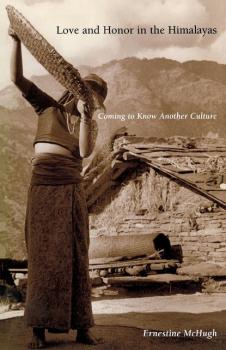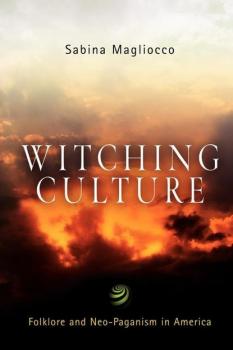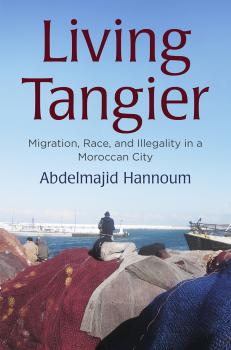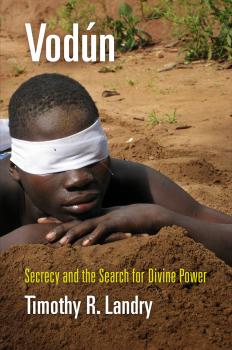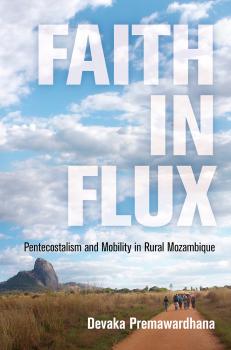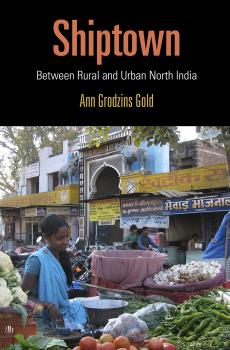Contemporary Ethnography
Скачать книги из серии Contemporary EthnographyLove and Honor in the Himalayas
American anthropologist Ernestine McHugh arrived in the foothills of the Annapurna mountains in Nepal, and, surrounded by terraced fields, rushing streams, and rocky paths, she began one of several sojourns among the Gurung people whose ramro hawa-pani (good wind and water) not only describes the enduring bounty of their land but also reflects the climate of goodwill they seek to sustain in their community. It was in their steep Himalayan villages that McHugh came to know another culture, witnessing and learning the Buddhist appreciation for equanimity in moments of precious joy and inevitable sorrow. Love and Honor in the Himalayas is McHugh's gripping ethnographic memoir based on research among the Gurungs conducted over a span of fourteen years. As she chronicles the events of her fieldwork, she also tells a story that admits feeling and involvement, writing of the people who housed her in the terms in which they cast their relationship with her, that of family. Welcomed to call her host Ama and become a daughter in the household, McHugh engaged in a strong network of kin and friendship. She intimately describes, with a sure sense of comedy and pathos, the family's diverse experiences of life and loss, self and personhood, hope, knowledge, and affection. In mundane as well as dramatic rituals, the Gurungs ever emphasize the importance of love and honor in everyday life, regardless of circumstances, in all human relationships. Such was the lesson learned by McHugh, who arrived a young woman facing her own hardships and came to understand—and experience—the power of their ways of being. While it attends to a particular place and its inhabitants, Love and Honor in the Himalayas is, above all, about human possibility, about what people make of their lives. Through the compelling force of her narrative, McHugh lets her emotionally open fieldwork reveal insight into the privilege of joining a community and a culture. It is an invitation to sustain grace and kindness in the face of adversity, cultivate harmony and mutual support, and cherish life fully.
Witching Culture
Taking the reader into the heart of one of the fastest-growing religious movements in North America, Sabina Magliocco reveals how the disciplines of anthropology and folklore were fundamental to the early development of Neo-Paganism and the revival of witchcraft. Magliocco examines the roots that this religious movement has in a Western spiritual tradition of mysticism disavowed by the Enlightenment. She explores, too, how modern Pagans and Witches are imaginatively reclaiming discarded practices and beliefs to create religions more in keeping with their personal experience of the world as sacred and filled with meaning. Neo-Pagan religions focus on experience, rather than belief, and many contemporary practitioners have had mystical experiences. They seek a context that normalizes them and creates in them new spiritual dimensions that involve change in ordinary consciousness. Magliocco analyzes magical practices and rituals of Neo-Paganism as art forms that reanimate the cosmos and stimulate the imagination of its practitioners. She discusses rituals that are put together using materials from a variety of cultural and historical sources, and examines the cultural politics surrounding the movement—how the Neo-Pagan movement creates identity by contrasting itself against the dominant culture and how it can be understood in the context of early twenty-first-century identity politics. Witching Culture is the first ethnography of this religious movement to focus specifically on the role of anthropology and folklore in its formation, on experiences that are central to its practice, and on what it reveals about identity and belief in twenty-first-century North America.
An Imagined Geography
For more than a decade a vicious civil war has torn the fabric of society in the West African country of Sierra Leone, forcing thousands to flee their homes for refugee camps and others to seek peace and asylum abroad. Sierra Leoneans have established new communities around the world, in London, Paris, New York, Washington, D.C., and elsewhere. Yet despite the great geographic range of this diaspora and the diverse ethnic backgrounds among Sierra Leoneans settled in the same communities abroad, these Africans have come to understand and express their shared identity through religious rituals, social engagements, and material culture. In An Imagined Geography , anthropologist JoAnn D'Alisera demonstrates persuasively that the long-held anthropological paradigms of separate, bounded, and unique communities, geographically located and neatly localized, must be reconsidered. Studying Sierra Leonean Muslims living in greater Washington, D.C., she shows how these immigrants maintain intense and genuine community ties through weddings, rituals, and travel, across both vast urban spaces and national boundaries. D'Alisera examines two primary issues: Sierra Leoneans' engagement with their homeland, to which they frequently traveled and often sent their children for upbringing until the outbreak of the civil war; and the Sierra Leonean interaction with a diverse, multicultural, increasingly global Muslim community that is undergoing its own search for identity. Sierra Leoneans in America, D'Alisera observes, express a longing for home and the pain of disconnection in powerful narratives about their country and about their own displacement. At the same time, however, self and communal identity are shaped by a pressing need to affiliate in their adopted country with Sierra Leoneans of all ethnic and religious backgrounds and with fellow Muslims from other parts of the world, a process that is played out against the complex social field of the American urban landscape.
Vodun
Tourists to Ouidah, a city on the coast of the Republic of Bénin, in West Africa, typically visit a few well-known sites of significance to the Vodún religion—the Python Temple, where Dangbé, the python spirit, is worshipped, and King Kpasse's sacred forest, which is the seat of the Vodún deity known as Lokò. However, other, less familiar places, such as the palace of the so-called supreme chief of Vodún in Bénin, are also rising in popularity as tourists become increasingly adventurous and as more Vodún priests and temples make themselves available to foreigners in the hopes of earning extra money. Timothy R. Landry examines the connections between local Vodún priests and spiritual seekers who travel to Bénin—some for the snapshot, others for full-fledged initiation into the religion. He argues that the ways in which the Vodún priests and tourists negotiate the transfer of confidential, sacred knowledge create its value. The more secrecy that surrounds Vodún ritual practice and material culture, the more authentic, coveted, and, consequently, expensive that knowledge becomes. Landry writes as anthropologist and initiate, having participated in hundreds of Vodún ceremonies, rituals, and festivals. Examining the role of money, the incarnation of deities, the limits of adaptation for the transnational community, and the belief in spirits, sorcery, and witchcraft, Vodún ponders the ethical implications of producing and consuming culture by local and international agents. Highlighting the ways in which racialization, power, and the legacy of colonialism affect the procurement and transmission of secret knowledge in West Africa and beyond, Landry demonstrates how, paradoxically, secrecy is critically important to Vodún's global expansion.
Faith in Flux
Anthropologist Devaka Premawardhana arrived in Africa to study the much reported «explosion» of Pentecostalism, the spread of which has indeed been massive. It is the continent's fastest growing form of Christianity and one of the world's fastest growing religious movements. Yet Premawardhana found no evidence for this in the province of Mozambique where he worked. His research suggests that much can be gained by including such places in the story of global Christianity, by shifting attention from the well-known places where Pentecostal churches flourish to the unfamiliar places where they fail. In Faith in Flux , Premawardhana documents the ambivalence with which Pentecostalism has been received by the Makhuwa, an indigenous and historically mobile people of northern Mozambique. The Makhuwa are not averse to the newly arrived churches—many relate to them powerfully. Few, however, remain in them permanently. Pentecostalism has not firmly taken root because it is seen as one potential path among many—a pragmatic and pluralistic outlook befitting a people accustomed to life on the move. This phenomenon parallels other historical developments, from responses to colonial and postcolonial intrusions to patterns of circular migration between rural villages and rising cities. But Premawardhana primarily attributes the religious fluidity he observed to an underlying existential mobility, an experimental disposition cultivated by the Makhuwa in their pre-Pentecostal pasts and carried by them into their post-Pentecostal futures. Faith in Flux aims not to downplay the influence of global forces on local worlds, but to recognize that such forces, «explosive» though they may be, never succeed in capturing the everyday intricacies of actual lives.
Shiptown
Jahazpur is a small market town or qasba with a diverse population of more than 20,000 people located in Bhilwara District in the North Indian state of Rajasthan. With roots deep in history and legend, Shiptown (a literal translation of landlocked Jahazpur's name) today is a subdistrict headquarters and thus a regional hub for government services unavailable in villages. Rural and town lives have long intersected in Shiptown's market streets, which are crammed with shopping opportunities, many designed to allure village customers. Temples, mosques, and shrines attract Hindus and Muslims from nearby areas. In the town's densely settled center—still partially walled, with arched gateways intact—many neighborhoods remain segregated by hereditary birth group. By contrast, in some newer, more spacious residential areas outside the walls, persons of distinct communities and religions live as neighbors. Throughout Jahazpur municipality a peaceful pluralism normally prevails. Ann Grodzins Gold lived in Santosh Nagar, the oldest of Shiptown's new settlements, for ten months, recording interviews and participating in festival, ritual, and social events—public and private, religious and secular. While engaged with contemporary scholarship, Shiptown is moored in the everyday lives of the town's residents, and each chapter has at its center a specific node of Jahazpur experience. Gold seeks to portray how neighborly relations are forged and endure across lines of difference; how ancient hierarchical social structures shift in major ways while never exactly disappearing; how in spite of pervasive conservative family values, gender roles are transforming rapidly and radically; how environmental deterioration affects not only public health but individual hearts, inspiring activism; and how commerce and morality keep uneasy company. She sustains a conviction that, even in the globalized present, local experiences are significant, and that anthropology—that most intimate and poetic of the social sciences—continues to foster productive conversations among human beings.
Death, Beauty, Struggle
Death, Beauty, Struggle represents a long labor of love and the summation of forty years of Margaret Trawick's groundbreaking research. Centering her gaze on the lowest castes of India, now called Dalits, she describes the experience of women at this precarious level who are still treated as sub-human, sometimes by family members, sometimes by higher-caste men. Their private worlds, however, are full of art; rural Dalit women sing beautiful songs of their own making and tell remarkable narratives of their own lives. Much that Tamil women shared with Trawick is rooted in the passionate attachments and acute wounds generated within families, but these women's voices resonate well beyond individually circumscribed lives. In their songs and life stories they critique social, political, economic, and domestic oppressions. They also incorporate visions of natural beauty and immanent divinity. Trawick presents Tamil women's words as relevant to universal human themes. Trawick's frames of analysis, developed throughout her long career of fieldwork in India, inform her ethnography of expressive culture. The songs and stories of Dalit women were recorded and transcribed, to be translated into lyrical passages in her own work. Death, Beauty, Struggle demonstrates a conviction that persons without privilege—from the rape victim to the landless laborer—possess both power and agency. Through verbal arts, Dalit women produce not only acute cultural critiques but also astonishing beauty.
Marriage Without Borders
In popular songs, televised media, news outlets, and online venues, a jabaaru immigré («a migrant's wife») may be depicted as an opportunistic gold-digger, a forsaken lonely heart, or a naïve dupe. Her migrant husband also faces multiple representations as profligate womanizer, conquering hero, heartless enslaver, and exploited workhorse. These depictions point to fluctuating understandings of gender, status, and power in Senegalese society and reflect an acute uneasiness within this coastal West African nation that has seen an exodus in the past thirty-five years, as more men and women migrate out of Senegal in hope of a better financial future. Marriage Without Borders is a multi-sited study of Senegalese migration and marriage that showcases contemporary changes in kinship practices across the globe engendered by the neoliberal demand for mobility and flexibility. Based on ten years of ethnographic research in both Europe and Senegal, the book examines a particular social outcome of economic globalization: transnational marriages between Senegalese migrant men living in Europe and women at home in Senegal. These marriages have grown exponentially among the Senegalese, as economic and social possibilities within the country have steadily declined. More and more, building successful social lives within Senegal seems to require reaching outside the country, through either migration or marriage to a migrant. New kinds of affective connection, and disconnection, arise as Senegalese men and women reshape existing conceptions of spousal responsibility, filial duty, Islamic piety, and familial care. Dinah Hannaford connects these Senegalese transnational marriages to the broader pattern of flexible kinship arrangements emerging across the global south, arguing that neoliberal globalization and its imperative for mobility extend deep into the family and the heart and stretch relationships across borders.
